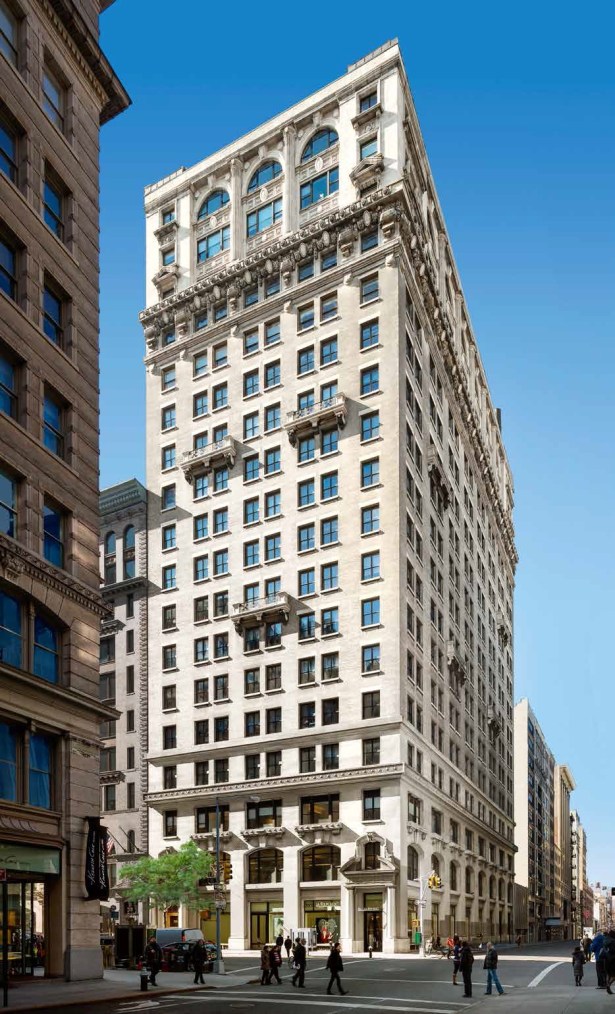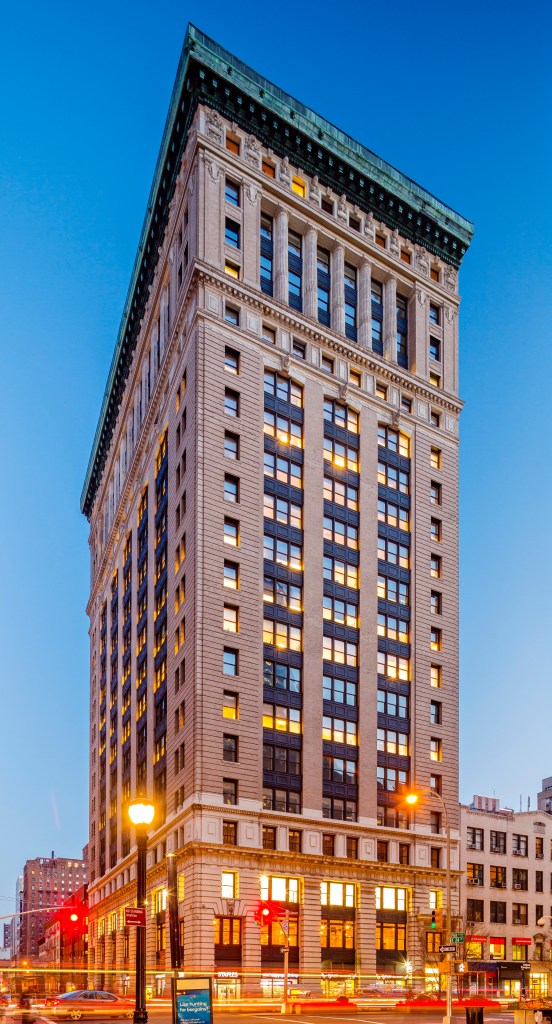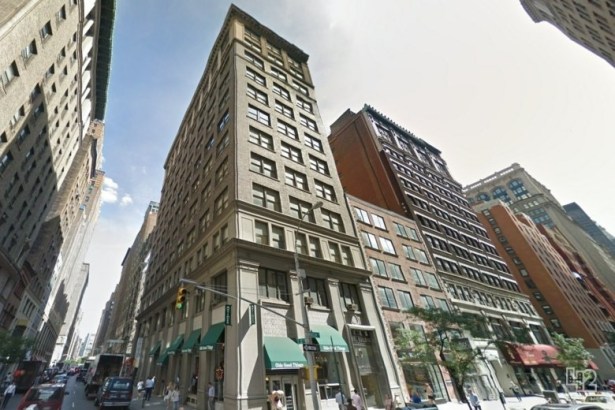Why Columbia Property Trust’s Nelson Mills Is Bullish on Midtown South
By Liam La Guerre November 1, 2017 10:00 am
reprints
Nelson Mills, the president and chief executive officer of the Atlanta-based publicly traded real estate investment trust Columbia Property Trust, has the excitement of a first-timer when he talks about New York.
“Every day we are discovering something new about the city,” the Southern-born Mills gushed to Commercial Observer from his offices on the fourth floor at 315 Park Avenue South, a property Columbia owns between East 23rd and East 24th Streets. “I had another [discovery] last night. I walked past Teddy Roosevelt’s birthplace [at 28 East 20th Street]. That’s New York. Every corner that you turn, there is some interesting bit of history or culture. It is just a fascinating place.”
Mills, 57, and his wife Judy moved to a rental near East 26th Street and Madison Avenue in April from Atlanta, not just for the nightlife but to be closer to his company’s new main market. On New Year’s Day 2015, Columbia had just one property in the city, and today more than one-third of its 19-building portfolio is here.
That’s because under Mills’ leadership Columbia has unloaded 58 properties valued at $3.6 billion since 2012 and shrank its holdings to just seven markets from 32, while it spent $2.8 billion acquiring 10 buildings in its now core markets: San Francisco, Washington, D.C., and New York City.
Its portfolio spans about 9 million square feet across the country. Columbia’s biggest market is now Manhattan, where the company owns seven properties spanning 2.6 million square feet (one of them is still under contract). Five of the seven assets are within walking distance from his apartment. (The company doesn’t have any properties in the outer boroughs.)
Why such a focus on Midtown South? Columbia is simply following demand.
“We think much of the demand in the last few years, and we think in the near future, is going to be driven largely by the [technology, advertising, media and information] sector,” Mills said. “And this has been, we think, the most successful market in attracting those type of tenants. It’s evidenced in the occupancy, the rate and so forth.”
Among recent acquisitions since dumping non-core properties is the purchase of 245-249 West 17th Street and 218 West 18th Street for $514 million from New York REIT in October. Twitter is the major tenant at the 281,294-square-foot West 17th Street building, while Red Bull is the anchor tenant at the 165,670-square-foot West 18th Street property.

And in July, Columbia entered into a joint venture with Allianz Real Estate to acquire and manage office buildings in gateway markets in the country. The companies each contributed properties to the joint venture. Allianz took a 45 percent interest in two of Columbia’s buildings in California, while Columbia gained 49.5 percent in the 352,000-square-foot 114 Fifth Avenue between West 16th and West 17th Streets (in Midtown South). L&L Holding Company has a 1 percent equity stake and handles leasing and managing for the Manhattan property.
Last month, the JV purchased a 581,000-square-foot office property in Washington, D.C., for $421 million.
“We at Allianz and Columbia share a similar strategy—acquire core assets in prime locations within 24/7 global cities and own them over the long-term,” Gary Phillips, the managing director and head of acquisitions for Allianz, said in a statement to CO. “Strategic alignment between joint venture partners is paramount to our long-term success so aligning shoulder to shoulder with operating partners that have a shared vision makes a lot of sense for us.”
The 19-story building recently went through a $45 million renovation and features large floor plates. Allianz actually outbid Columbia for the property when it acquired a majority stake in the building in 2015 for $209 million, according to property records. “[We] got outbid by Allianz, but we liked the property,” Mills said.
The resolve to not give up on a property—even when getting outbid—reveals something about Mills.
“[Mills] is a strategic thinker, is very well-respected by his peers and colleagues, and he understands the spirit of partnership,” Phillips said. “I have enjoyed working with Nelson personally and hope to continue to develop what I believe will be a prosperous and active relationship for many years to come.”
Columbia’s foray into Midtown South began with 315 Park Avenue South. The company bought the building on Jan. 7, 2015, for $353.9 million with the knowledge that roughly 80 percent of the building was going to be vacant as tenants’ leases expired over the following two to three years. The largest tenant, Credit Suisse, which left in April 2017, had already announced it was departing for 11 Madison Avenue.
In the real estate world, this is called opportunity. The plan was simple: As the tenants leave, upgrade the building and refill it with higher rents, aiming again for TAMI tenants.
They spent approximately $10 million to renovate the 331,000-square-foot building, which included a new lobby and entrance on East 24th Street as well as a facade restoration and upgraded elevator cabs. The renovations are expected to be completed in two months.
Columbia hired L&L as the manager and leasing agent for the building, as Midtown South is L&L’s pedigree. The 20-story building is fully leased or under contract but for the 14th through 16th floors.
London-based investment management firm Winton Capital Management took the top two floors, amassing 34,844 square feet last year. Also in 2016, high-end fitness concept Equinox took 44,458 square feet on the entire second and third floors as well as part of the fourth floor. And media company BDG Media, the parent of Bustle, Elite Daily and Romper, signed a 34,100-square-foot deal last year and has since expanded to 51,150 square feet.
“At the time when we bought it, we knew that 80 percent of the floors would be rolling,” Mills said. “We are right on pace with our expectations when we bought the property. And we are exceeding our rent levels by a bit.”

When it underwrote the property, Columbia executives figured they’d be able to get rents in the $80s per square foot, but in fact they have signed tenants in the $90s per square foot, according to Mills. (The asking rent in the Winton Capital deal was $105 per square foot, as CO previously reported.)
“He came into the position when his firm owned a bunch of real estate in places that are not your top 10 markets,” said L&L President and Chief Investment Officer Robert Lapidus. “And he said he wanted to transform the portfolio. He executed his strategy [as] he told his board he would do. When you say something is one thing and when you actually do it, your credibility goes up.”
Mills, who has three adult children (ages 32, 29 and 28), has been married to his college sweetheart for 33 years. He was born on a farm outside of Memphis to parents who were teachers. He graduated from the University of Tennessee in 1983 with a degree in accounting and then went to work for KPMG in Nashville, focusing on tax advisory services for the real estate industry.
After a dozen years there, he became a partner in the firm’s Atlanta office. He remained there for another three years before moving to Lendlease to be the chief financial officer. From 2005 to 2009, he became the president and chief operating officer for Williams Realty Advisors, the manager and adviser of real estate investment funds.
Mills joined Columbia’s board in 2007 but was not appointed the president of the company until 2010. The company at the time was part of Wells Real Estate Investment Trust, a real estate investment trust whose shares were not traded publicly. It had roughly 130,000 investors. The company owned a diverse portfolio of more than 80 properties around the country, which for the most part were single-tenant commercial assets with high-capitalization rates. This strategy helped the company have stable and high yields for its investors. But to grow, they needed to go public. So in 2012 it split from Wells and officially listed in 2013, and Mills became the CEO.
“We decided [in order] to take it public to attract a broader range of investors, including institutional investors, we needed to reposition the portfolio—fewer markets, better long-term markets, more growth opportunities and build teams in those markets to be able to compete in those markets,” Mills said. “Diversification does mitigate risk to a point, but you don’t need 32 markets.”
Since the selloff, Columbia has just two properties remaining in its headquartered city of Atlanta. The properties each have single-tenant users, with short terms remaining on their leases. Mills said Columbia executives will look to renew the leases before selling the properties. But “there are no immediate plans to sell them.”
And while Columbia has plans to exit the Atlanta market, Mills stopped short of saying that it would relocate the company’s headquarters to New York City. With only 12 of the company’s 98 employees in New York City, it would put a lot of workers out of a job in the Peach State.
“We have a terrific corporate team based in Atlanta,” Mills said. “Many of them have been with the company from the beginning. Atlanta is a great place to live for this team.”
The strategy shift came with many challenges, such as competing with more established office REITs—like Boston Properties, SL Green Realty Corp., Empire State Realty Trust and Vornado Realty Trust—and standing out.
In the third quarter of 2017, Columbia’s net income soared to $101.5 million from $36.9 million during the same three-month period last year with the increase coming from the sale of real estate. But at the same time, the company’s revenue was roughly $60.4 million, a significant drop from $111.3 million in the same period last year. (Again, Mills said, because they’ve sold off so many properties.)
Mills promised that the rents will return once Columbia leases up new properties in its portfolio and free rent periods end. Experts are praising his moves.
Following the recent third quarter earnings results, analysts from JMP Securities and Evercore Group both expect Columbia’s shares to “outperform” the market, citing its transformed portfolio, which will produce earnings growth, and the leasing up of its new properties. Columbia’s current portfolio is 95 percent leased with average terms of seven-and-a-half years remaining.
And his board is buying it if his income is any indication. Including salary, stock, benefits and nonequity plans, Nelson’s compensation has risen from $3 million in 2014 to $3.7 million in 2015 and $4.4 million in 2016, according to the most recent filings.
“We are understand that we are in a very competitive field,” Mills said. “We have chosen some of the most competitive [markets]. We are going head to head with well-established companies with great reputations, but I think we are delivering on it.”
Under Mills, Columbia has had a simple plan with acquiring new properties and leasing them to multiple tenants. A case and point is with the old New York Times building at 229 West 43rd Street. The company bought the upper portion of the building, a 12-story office condo in July 2015 for $516 million. (Kushner Companies owns the four retail floors.)
Yahoo (now part of Oath) is the anchor tenant at the property with 193,000 square feet, and in April 2017, Snapchat parent Snap Inc. signed 26,000 square feet to expand its headquarters to 121,000 square feet at the tower.

Sometimes, though, Columbia’s old strategy of a single-tenant occupant has become the best option. The company’s first property in the city was the 25-story building at 222 East 41st Street, at which it acquired the ground lease for nearly $320 million in 2007. The building was leased almost entirely to law firm Jones Day. (Columbia had an office for itself on the 24th story.)
Jones Day signed a lease in Brookfield Place to relocate from Midtown in 2013 before the lease expired earlier this year, so Columbia had a four-year window to lease new tenants to the entire 390,000-square-foot building. It was set to do so with multiple tenants, but then NYU Langone Health approached the landlord for the entire building. It helped fill a giant gap, and NYU Langone’s lease will keep it there for 31 years, ensuring that Columbia continues to generate revenue from the building for decades to come.
“[Columbia] understood our needs and priorities and worked with us to achieve a long lease that gave us the control and flexibility we needed for the future,” Vicki Match Suna, a senior vice president and the vice dean for real estate development and facilities at NYU Langone, said in a prepared statement to CO. “They timely completed their demolition work and turned over the site for our tenant work on schedule.”
Up next is closing the Midtown South deal. Soon the company will own the 127,000-square-foot property at 149 Madison Avenue between East 31st and East 32nd Streets. It’s another Midtown South-style building with 14-foot ceiling heights and large windows.
This deal has required creativity; Columbia is actually in contract to buy the land under the building for $88 million (the lease for the building expires in January). The company expects the deal to close in mere weeks, after which it plans to revamp the entire building with new windows, elevators, lobby, facade restoration and building systems upgrades. And Columbia has assembled a team of architects and project managers for the work. Following the renovation the team plans to lease up the property at higher rents.
The current tenants “are welcome to stay if they can meet the rents, but it is likely that we will be looking at new tenants, probably multitenants,” Mills said, before adding, “I mean there’s always a chance that a single tenant emerges.”



